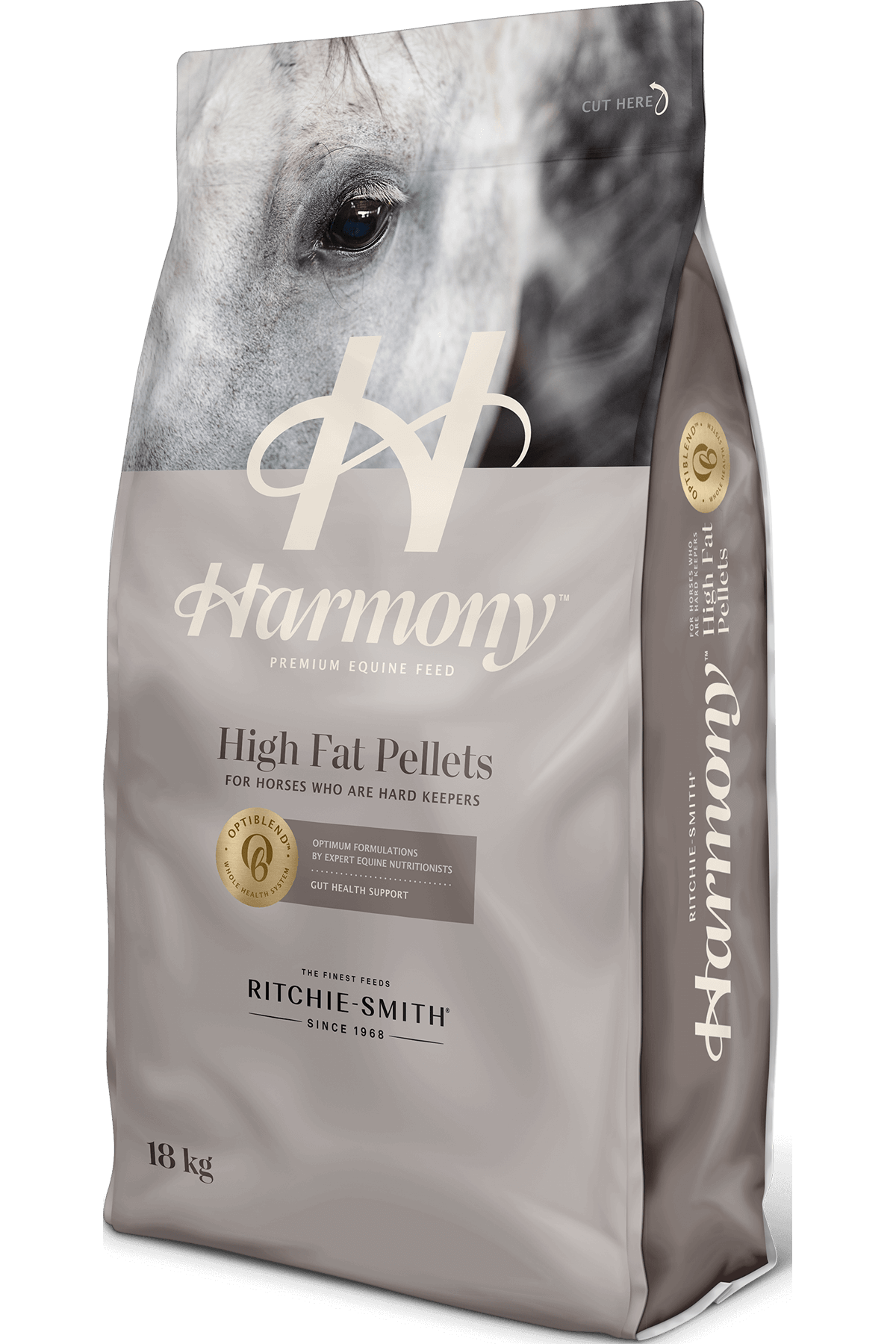Winter Horseshoeing Guide: What to Consider When Shoeing a Horse for Winter

As temperatures drop and ground conditions change, proper hoof care and winter shoeing become critical to keep your horse safe, balanced, and performing well.
Winter presents unique horse care challenges. There’s frozen ground, slippery riding conditions, reduced turnout, and dietary alterations. Preparing your horse’s hooves for the season means more than just changing shoes; it requires a holistic approach that considers hoof health, traction, nutrition, and your horse’s workload. This guide explores the elements to consider when shoeing a horse for winter.
Winter Hoof Health
Cold, wet, and frozen conditions can take a toll on your horse’s hooves, affecting both structure and circulation.
Here’s what to prioritize in your winter hoof care routine:
Maintain Moisture Balance
Snow, ice, and slush can soften a horse’s hooves. Hooves then harden and crack when frozen again. To help maintain the ideal moisture balance:
-
Keep hooves clean and dry.
-
Apply a hoof hardener or protective dressing if your horse’s hooves are soft.
-
Avoid excessive oils that can seal in moisture.
-
Schedule regular farrier checkups to catch early signs of bacterial infection.
Stick to a Trimming Schedule
Even if growth slows, don’t stretch trimming intervals.
Regular trimming maintains hoof balance, prevents long toes or underrun heels, and helps avoid strain on tendons and joints.
Support Circulation
Turnout and light exercise keep blood flowing to the feet, promoting healthy growth and reducing winter stiffness.
Winter Performance and Terrain Considerations
Each horse’s terrain, workload, and riding conditions should guide your winter shoeing decisions. Discuss these factors with your farrier:
Frozen or Icy Footing
Smooth metal shoes can be dangerously slick. Add traction devices like borium, studs, or ice nails for better grip and safety.
Indoor Work
If your horse is mostly ridden indoors, too much traction can actually increase joint strain.
A simple, well-balanced shoe is often the safest choice.
Outdoor or Trail Work
For horses working outside in snowy conditions, snow pads or bubble pads prevent snow from packing into the hoof and causing bruising.
Choosing the Right Winter Horseshoes
The best winter horseshoes strike a balance between traction, protection, and flexibility.
Below are common winter shoeing setups and their benefits:
Full pads with ice studs
Full pads with ice studs provide comprehensive winter hoof protection by addressing multiple cold-weather challenges simultaneously. The integrated ice studs, typically made from tungsten carbide, offer superior traction on ice, packed snow, and frozen ground, preventing dangerous slips and falls that can lead to injury. The full pad itself creates a solid barrier that prevents snowballing - the accumulation of packed snow and ice within the hoof's sole that forces horses to walk on unstable, dome-shaped masses.
Pads protect the sensitive sole and frog from the harsh concussion of frozen ground, road salt, and chemical de-icers while maintaining consistent performance throughout the winter season without requiring the daily installation and removal that screw-in studs demand. This combination makes full pads with ice studs particularly valuable for horses in regular work, those navigating varied terrain, or any equine that must maintain safe footing during the winter months. The system provides peace of mind for owners and farriers, allowing horses to move confidently and comfortably, regardless of weather conditions.
Rim shoes
Rim shoes feature a distinctive U-shaped groove running along the ground surface of the shoe, creating raised outer and inner edges that provide multiple functional advantages for various horses and disciplines. This groove design offers enhanced traction on multiple surfaces, including wet grass, mud, and hard ground, by allowing the raised edges to grip effectively. The concave center reduces suction in soft footing and prevents slipping on pavement.
The rim design naturally sheds debris, mud, and small stones more efficiently than flat shoes, keeping the shoe's ground surface clearer and maintaining consistent performance throughout the shoeing cycle.
Rim shoes are particularly popular for driving horses, as they provide reliable grip without the aggression of calks or studs, and for horses working on varied terrain where versatile traction is essential. The grooved structure also makes these shoes slightly lighter than comparable flat shoes of the same dimensions while maintaining structural integrity. The raised edges tend to wear more evenly, potentially extending the shoe's usable life. The design allows farriers to modify traction by adding borium, drill-tek, or tungsten to the edges for specialized applications, making them highly adaptable to specific working conditions or performance needs.
Snow pads
Snow pads, also known as rim pads or pop-out pads, are specialized concave rubber or synthetic pads that attach to the shoe and cover only the ground surface of the hoof while leaving the sole exposed to air and natural expansion. The primary benefit of snow pads is their ability to prevent snowballing through a flexible, dome-shaped design that pops packed snow out of the hoof as the horse walks, using the natural compression and release of each step to self-clean.
This design enables the sole and frog to maintain contact with the ground for natural hoof function while still providing effective snowball prevention, making them ideal for horses that need winter protection without full sole coverage. Snow pads are lighter and less expensive than full pads with ice studs, easier to apply, and allow better hoof breathability and moisture management since the sole remains exposed. However, compared to full pads with ice studs, snow pads offer less traction on ice and frozen surfaces. Snow pads also don't protect the sole from concussion on frozen ground or shield it from road salt and de-icers the way full pads do.
The choice between snow pads and full pads with ice studs ultimately depends on the horse's work, terrain, and whether maximum ice traction is necessary. Snow pads are best for horses that require basic snowball prevention with natural hoof function, while full pads with ice studs are superior for horses with significant winter traction and comprehensive sole protection needs.
Shop Source for Horse’s Horseshoe Collection for Best-in-Class Canadian Horseshoes This Winter
Source for Horse is Canada’s leader for winter horseshoes. Our collection features a complete range of products to safeguard your horse and protect their hooves throughout the winter months, including rim shoes, hoof pads, ice studs, and more. Explore our full collection today for Canada’s best farrier supplies!
Winter Horseshoeing FAQs
How often should my horse be shod or trimmed in winter?
Every 6–8 weeks is ideal. Even if growth slows, consistent farrier visits prevent imbalances and keep traction devices in check.
Should I pull my horse’s shoes for winter?
It depends. Horses on soft turnout often thrive barefoot, while those in regular work need shoes for protection and traction.
How can I stop snow from balling up in hooves?
Ask your farrier about snow pads or use a non-stick hoof spray before rides.
Are studs or borium safe for every horse?
Not always. Too much traction on hard or indoor surfaces can stress joints. Choose traction types based on your horse’s footing.
Can diet impact hoof strength in winter?
Absolutely. Reduced access to fresh forage can cause slower growth and weaker hoof walls. A supplement with biotin, zinc, and methionine helps maintain strength.
What’s the biggest winter shoeing mistake?
Skipping farrier appointments. Even minor neglect can lead to cracks, flares, and imbalance that take months to correct.
Should I use hoof oils or hardeners in winter?
Yes, but sparingly. Focus on moisture balance, not sealing the hoof entirely.
How do I know if my horse’s hooves are too soft or brittle?
Soft hooves feel spongy and chip easily; brittle hooves crack and flake. Adjust your hoof-care routine accordingly.
Do changes in workload affect winter shoeing?
Yes. Horses shifting to lighter work may benefit from simpler shoes or a barefoot rest period.
What’s the best way to keep hooves healthy all winter?
-
Stay on your farrier schedule.
-
Feed a nutrient-rich diet.
-
Ensure turnout for circulation.
-
Tailor your horse’s winter horseshoeing plan to terrain and workload.



